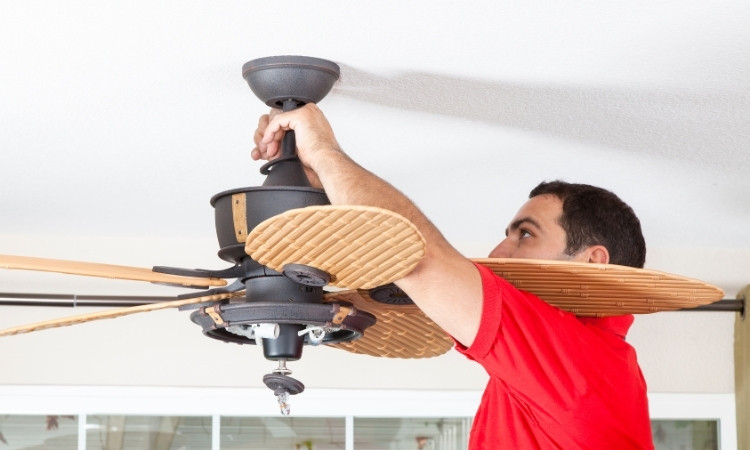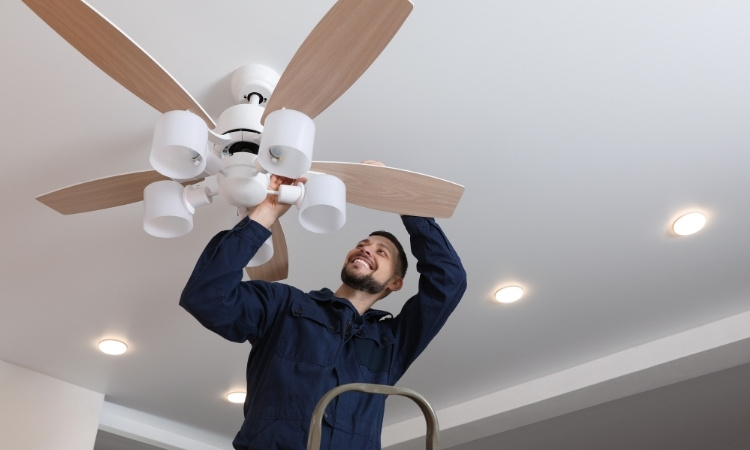There’s too much heat in Singapore. If your ceiling fan is broken, then it’ll be annoying and aggravating for you to live in such a hot room. So, how to fix a broken ceiling fan in Singapore? We’ll teach you that step by step in this article on how to do it.
You don’t need any Technician to do it. You only need to follow the guide we gave you, and your fan will be up and working absolutely fine. Moreover, LS Electrician Servicing Singapore’s detailed process is a guide on this matter. Let’s also not forget their efficient services in exhaust fan installation, power socket installation, and fan installation and repair domains.
Importance Of Fixing A Broken Ceiling Fan In Singapore
Fixing a broken ceiling in Singapore is important for these reasons:
- Keeps you cool in Singapore’s hot and humid weather
- Saves money compared to using air conditioning
- Helps improve air circulation in your home
- Prevents bigger problems or safety risks later
- Cheaper to fix than replace the whole fan
- Reduces waiting time for a technician
- Makes your home more comfortable instantly
- Extends the life of your ceiling fan
- Good for the environment by reducing waste
How to Fix a Broken Ceiling Fan in Singapore? – Step-By-Step Guide
Follow this expert guide to fix a broken ceiling fan and start getting the cool air once again.
Turn Off the Power First
The first step is to power off, as working without it may give you an electric shock. Go to your circuit breaker and turn off the switch for the fan. If it’s not labe, turn off the main one just to be safe.

It’s always better to miss TV for five minutes than to get zapped. Once you’re sure the fan is off, move on to the next step.
Check If the Blades Are Loose
Is the fan shaking, wobbling, or not spinning right? That’s usually because of the loose blades on the fan.
Get a screwdriver and then tighten the screws that hold each blade. If the blades are cracked or damaged, you need to buy new ones that suit your fan.
Then, try spinning the blades gently by hand and see if they’re spinning fine without shaking. If any of them stick or wobble, adjust the tightness and fix them right away until all three are spinning smoothly.
Test the Wall Switch
Sometimes, it’s not the fan that’s faulty but the switch. Switches may have issues over time, like loosening or breaking down.
To check, try turning the switch on and off a few times and see if it’s loose or if there’s no click. If you find any issues with it, then replace it with a new one.
But, please, make sure when you’re replacing the switch, you first get the power off. Doing it with power on is risky, especially when you’re not experienced enough.
You can also try plugging another appliance into the same outlet, if it’s a plug-type switch. No power? Then the switch is your problem.
Inspect the Capacitor
The capacitor is the small part inside the fan that helps it start spinning. If your fan hums but doesn’t move, this is likely the problem. It’s often shaped like a small cylinder or box and sits hidden under the fan’s cover.
To reach it, you’ll have to remove the fan’s base by unscrewing a few parts. If the capacitor looks bloated or has burn marks, it’s no good anymore and needs to be replaced.
Luckily, new ones don’t cost much, and you can get them at most local hardware stores without any fuss.
Clean Out Dust and Dirt
Fans in Singapore collect dust fast, thanks to the humidity. Too much dust can block the motor and slow the fan down.
Take off the cover and wipe down everything using a dry cloth or brush. Don’t forget the motor area. Avoid using water inside the fan, unless you want to ruin it for good. A clean fan runs better, lasts longer, and doesn’t rain dust on your dinner.
Check the Remote Control or Regulator
If your ceiling fan uses a remote or wall regulator, make sure they’re working. Sometimes the issue isn’t the fan, but the tool controlling it.
Change the batteries in the remote or test the regulator with another fan. If the speed settings don’t change or nothing responds, you’ve found your culprit. It’s easier to swap a remote or regulator than take the whole fan apart.
Look for Burn Marks or Smell
Stand under the fan and give it a good sniff. Not too close though. If you smell something burnt or see any black marks around the motor or wiring, stop using it. This means the motor may be damaged. It’s not safe to fix this on your own.
At this point, it’s best to call a technician. Sometimes, the safest repair is knowing when not to try yourself.

Reassemble and Test the Fan
After you’ve gone through all the checks and cleaned things up, start putting the fan back together slowly.
Don’t rush it. Make sure each screw goes back where it came from. Double-check that nothing’s left on the floor or table.
When everything’s back in place, turn the power on and try the switch. If the fan runs smoothly, you nailed it. If it doesn’t, go back and look things over one more time.
Final Words
A broken ceiling fan can cause a lot of trouble in the scorching heat. So, how to fix a broken ceiling fan in Singapore? First, turn off the power, then check if the blades are loose. Tighten the screws if needed, then test the wall switch for power.
If that’s fine, open the fan and inspect the capacitor. Clean out dust and dirt, then check if the remote or regulator works. Look for burn marks or smells, then reassemble the fan properly. Finally, switch the power back on and test it.
